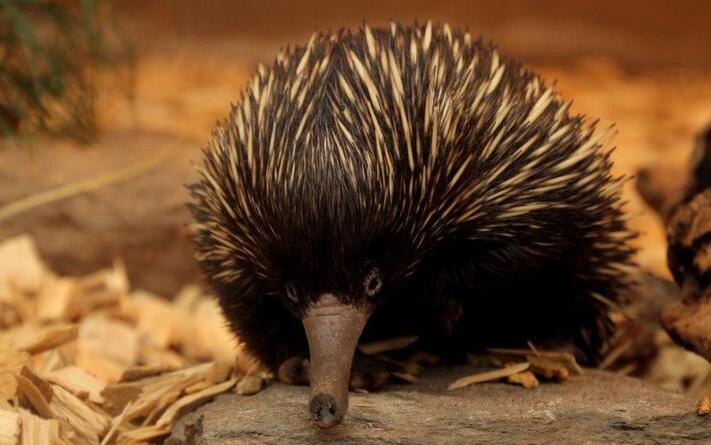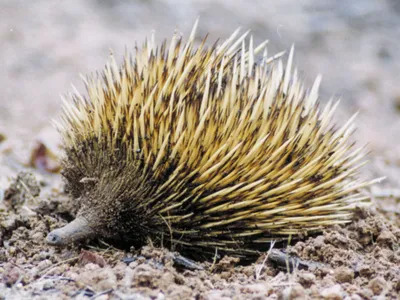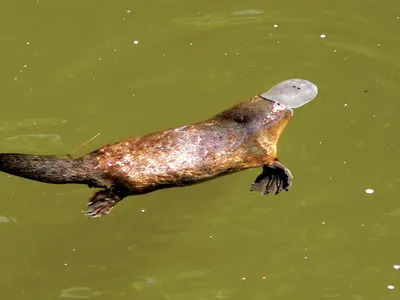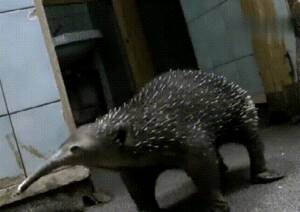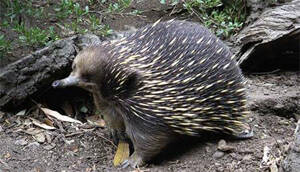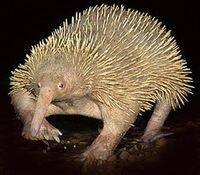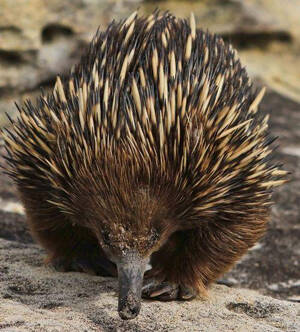Western Long-beaked Echidna
IUCN
LCBasic Information
Scientific classification
- name:Western Long-beaked Echidna
- Scientific Name:Western Long-beaked Echidna,Long-nosed Spiny Anteater,New Guinea Long-nosed Echidna,Long-beaked Echidna,Long-nosed Echidna,Zaglossus bruijnii
- Outline:Monotremata
- Family:Echidna
Vital signs
- length:45-77cm
- Weight:5-10kg
- lifetime:About 50 years
Feature
It is the largest member of the monotreme
Distribution and Habitat
The long-rossed echidna is found only in Papua New Guinea, but during the Pleistocene it was found in mainland Australia and Tasmania.
Prefers to live in alpine grasslands and moist mountain forests. It ranges from 1,300 m to 4,000 m above sea level, but is not found in the southern lowlands and the northern coast, and may also be found on the neighbouring Indonesian island of Sarawati. They prefer to live in alpine grasslands and moist mountain forests, ranging from low mountain to high altitude scrub, sandy plains, grasslands, open forests, and rocky semi-desert areas.
Appearance
The long-robed echidna is a very peculiar small and precious mammal. Its appearance looks roughly like a hedgehog or porcupine, and it has a small and pointed head, short limbs, a fat body and dense needle-hair, but it is a different animal from hedgehog and porcupine, and it is far from each other in terms of kinship. The long-robed echidna is larger than other echidnas, measuring about 45-77 cm long and weighing 5-10 kg, with males larger than females. The head and the lower part of the body have only hair without thorns, of which the lower part of the hair is short, soft and lighter in color. The rest of the body is covered with hollow needles of varying lengths. The tip of the needle is blunt and the central cavity of the needle is small. These needles are actually made of hair and are very hard. The longest spines grow on the waist, buttocks, and sides of the body, and are circular in cross section, while the rest of the spines are elliptical in cross section. Although the forelim
Details
Echidna long-rostris Zaglossus bruijnii) Western Long-beaked Echidna, Long-nosed Spiny Anteater, New Guinea Long-nosed Echidna, Long-beaked Echidna, Long-nosed Echidna, almost twice the size of the short-rossed echidna, is the largest member of the monotreme order, with no subspecies.
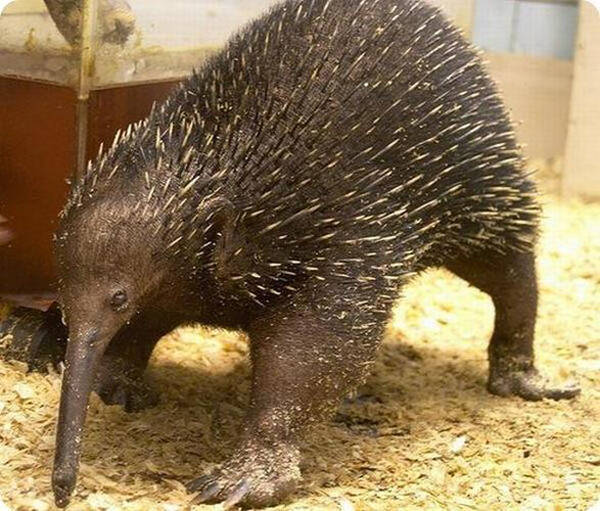
Although they do not climb trees, they are excellent engineers. They can dig quickly, even if the ground is hard. Within ten minutes, the echidna burrows into the earth and hides itself. However, under natural conditions, echidnas do not make their own nests, but use the dwellings of other animals. Even when the long-robed echidna wants to dig, it does so by hiding the lower part of its body and leaving the upper part exposed, because it always expects a needle to protect it. In addition, the long-robed echidna also curls into a round shape, like a hedgehog. Like Hedgehogs, long-robed echidnas have a hard time keeping their fur clean between their needles. Their fur is usually infested with parasites, so they are constantly itching. Nature has placed long curved claws on the second toe of the back foot of the echidna, which it uses to comb its hair and scratch itself.
The long-robed echidna has poor eyesight, but is keenly aware of slight tremors in the soil. They mainly eat ants and insects, as can be guessed from the structure of their mouths: long tubes, no teeth, and a long, flexible tongue. However, when the opportunity arises, it will not object to changing its diet, but only those foods that can fit through the small holes in its "elephant nose" -like mouth. Unlike their close relatives, the platypus, the long-robed echidna can go without food or water for long periods of time, sometimes as long as a month. It seems that they sometimes go into a kind of dormant state. This is most likely an adaptation to the environment. They inhabit the islands of Victoria and Tasmania, where winter temperatures are colder. In general, the echidna, unlike the platypus, is almost always on the move, not only at night, but also during the day, especially in good weather. Sometimes this wonderful animal runs on its two hind legs!
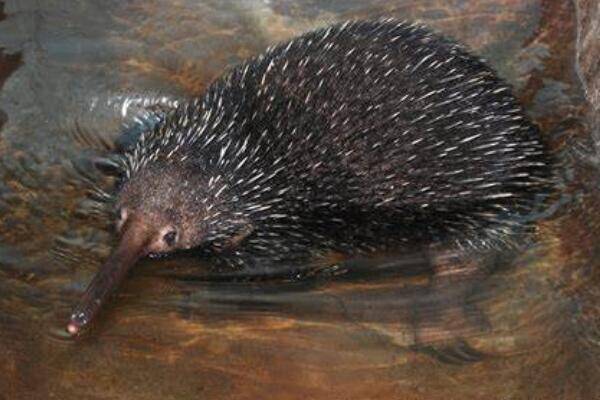
When the long-robed echidna lays her eggs, the female bends her body like a caterpillar, and points the cloaca toward the pouch, so that the eggs fall right into the pouch as they exit the cloaca, and some viscous fluid flows out of the cloaca, attaching the eggs to the hairs of the pouch. Eggs are laid 1-2 at a time, oval, 15 mm in diameter. The egg shell feels like thick parchment paper, and also resembles the egg shell of many reptiles, with a leathery shell and a large yolk inside, without the egg white.
Since she has no permanent home, the eggs are laid and carried by the female, and after a few weeks the young hatch and lick the milk from the milk holes in the pouch. Small echidnas live in their pouches until they grow needles on their backs, usually 6-8 weeks and 9-10 cm long. At this point, the female echidna removes the young from her pouch and hides them in a very simple nest. By the time they are one year old, the baby echidna is sexually mature, weighs 2.5 to 6 kg, and has a needle up to 6 cm long on its back. The lactation period is about 7-8 weeks, when the young grow hard spines, so that the female feels uncomfortable, they are pulled out, hidden in bushes and other hidden places, continue to feed until the young can live independently.
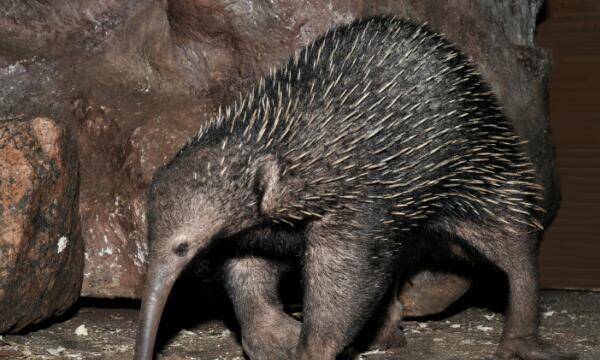
On November 19, 2010, the Zoological Society of London announced the 2010 list of Globally endangered (EDGE) species of unique evolutionary significance. The eastern long-billed echidna is a difficult animal to capture and produces its young by laying eggs. They are among the rarest and most genetically unique mammals on Earth. In addition to the Eastern long-billed Echidna, the other three species to top the 2010 EDGE Species list are the Western long-billed Echidna and the Edin Paulf long-billed echidna. All three species of long-billed echidnas are listed as critically endangered by the International Union for Conservation of Nature (IUCN).
The long-rosed echidna is listed as endangered by the International Union for Conservation of Nature (IUCN), with populations declining due to habitat loss and hunting. Although hunting of the long-rossed echidna has been banned by the governments of Indonesia and New Guinea, traditional hunting continues. In 2006, Conservation International discovered large numbers of long-rosted echidnas in the Foya Mountains of Papua province.
Listed in the International Union for Conservation of Nature Red List of Threatened Species (IUCN) in 2015 ver 3.1 - critically Endangered (CR).
Listed in the Washington Convention CITES Appendix I protected animals.
Protect wild animals and eliminate wild meat.
Maintaining ecological balance is everyone's responsibility!

